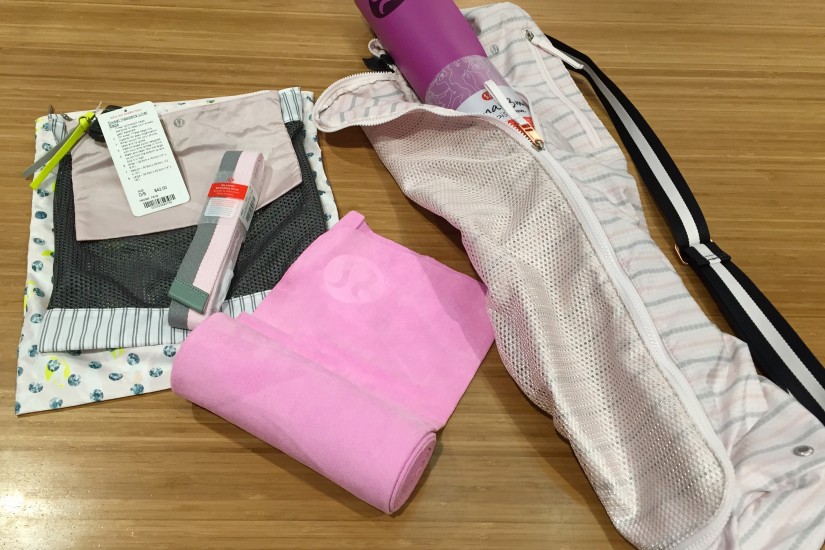Poor lower extremity strength is the number one reason that people fall. A sedentary individual loses about 40% of their muscle mass and 30% of their strength by age 70. Unfortunately, the lower extremities are more affected than the upper extremities.
One of the most practical and functional lower extremity strength tests is the Chair Rise Test. Do not perform this test if it increases knee or hip pain.
• Place a chair against a wall. Sit on the edge of the chair and cross your arms.
• Time yourself as you stand up and sit down 5 times as quickly as you can. If you can’t complete the 5 repetitions from a standard chair, put a cushion on the chair seat and determine if that chair height will allow you to complete the 5 repetitions for time. This raised chair height will be your baseline but when you retest, try and use a chair without the extra cushion.
• The norm for 5 sit to stands from a normal 18″chair is 11.4 sec (60 to 69 years), 12.6 sec. (70 to 79 years), and 14.8 sec. (80 to 89 years).
The technique used to perform strength exercises is very important and determines how much strength improvement an individual will achieve. The key to improving the strength of a muscle is to work to muscular fatigue and not to a specific predetermined number of repetitions. 3 sets of 10 or 3 sets of 15 are not necessarily specific to your strengthening needs. In fact, research shows that there is not a huge difference in the strength results between 1, 2, or 3 sets of exercise.
More muscle tension (i.e. muscle strength) is developed with a slow contraction speed. If you have ever been to a fitness center and watched people strength training, you would have seen them doing their strength exercises too quickly 99% of the time.
Try to work at a speed of 2 seconds while the muscle is shortening and 4 seconds while the muscle is lengthening. I have people count bananas: 2 bananas/4 bananas. For example, while doing an elbow curl you would bend the elbow for a 2 count and then lower the weight straightening the elbow for a 4 count. So in a nutshell, if you work to fatigue at a slow speed of contraction, you only have to do one set each of exercise. Quality NOT quantity.
Take 2 seconds (bananas) to stand from the chair and 4 seconds (bananas) to sit back into the chair. Lying on your back and raising your leg straight is a good initial exercise but it won’t help improve your balance and function like the chair rise exercise will. You need to be on your feet for optimal strength and balance improvement.
To strengthen your legs, especially your quadriceps, this is an excellent progression to follow:
• Step 1: first you determine the chair height that will allow you to perform 15-25 repetitions. If you can’t do 15 repetitions, your chair seat is too low and if you can perform more than 25 repetitions, the chair seat is too high. As previously mentioned, you should work to fatigue. Fatigue is not when your muscles get sore or start to shake. Fatigue is when you can’t rise from the chair or you can’t sit down without “plopping” into the chair. Of course, if you have knee or hip joint pain, you need to stop and alter the exercise (see below).
• Step 2: gradually lower the chair height until you can sit to stand at least 15 times from a regular chair height (18″). Once you can do more than 25 sit to stands from a regular chair height you can hold onto a small weight (5-10#) in each hand as you gradually work up to 25 repetitions.
I need to address those individuals who can’t stand up from a chair seat of any height 15 times without using their arms for assistance. This is the progression for that individual:
• Step 1: use your arms to assist in standing from the seated position but DO NOT use your arms to sit back down. If you can’t sit back down without using your arms and you “plop” into the chair, you need to raise the seat height (with cushions, pillows) until you can sit without “plopping.”
• Step 2: use this seat height and do as many repetitions to fatigue as possible (remember fatigue is when you can’t stand up or sit without “plopping”). You should be able to do at least 15 repetitions. If you can do more than 25 repetitions, then lower the chair seat. Your goal is to find the seat height that allows you to do 15 repetitions but not 25 repetitions before you “plop.”
• Step 3: when you have continued to lower the seat height a significant amount and can perform at least 15 repetitions, slightly raise the seat height and try to sit and stand without using the arms at all (both standing and sitting). Do as many repetitions as you can and lower the seat height when you can do more than 25 repetitions.
• Step 4: continue to progressively lower the chair height until you get to a normal chair height.
Yes, this is hard work. But if you follow these guidelines, you will begin to notice improved functional ability within 2-3 weeks.
If you have knee pain when doing the chair rise exercise you may want to:
• Make sure you are sitting at the front edge of the chair.
• Spread your knees wide apart, at least shoulder width apart.
• When you sit back into the chair, concentrate on sitting your butt back into the chair and not bending forward so your knees go past the tips of your toes.
• If one knee is painful, slide that foot slightly forward of the other foot when you do the exercise.
• Only work at a chair height that doesn’t give you knee pain.
• If none of these options significantly decrease your knee pain, stop doing this exercise and see a physician. Formal physical therapy may be indicated.
Of course, there are other muscles that need to be strengthened to improve your balance such as 2 key hip muscles, your calves, and your shins. These will be discussed in another article.




